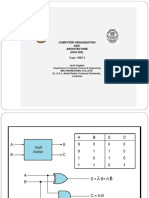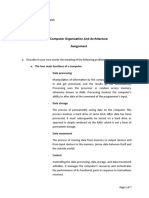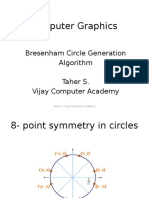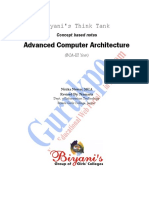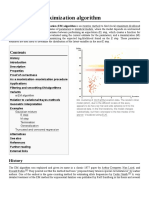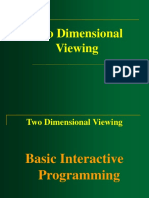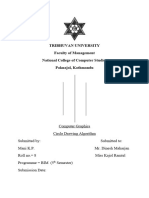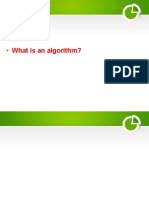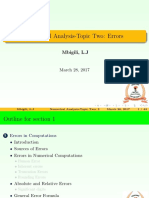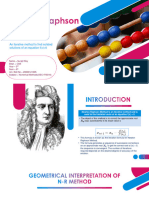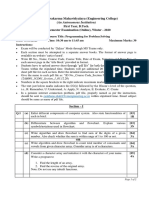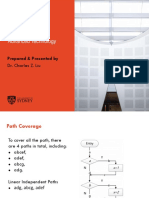0% found this document useful (0 votes)
165 views26 pagesLine and Circle Drawing Algorithms
The document discusses algorithms for plotting points and lines on a screen, including the Digital Differential Analyzer (DDA) algorithm and Bresenham's line and circle drawing algorithms. It provides details on how each algorithm works, including examples of applying the DDA and Bresenham's line algorithm to draw specific lines. Practice questions are also included asking to apply the algorithms to draw additional lines and circles.
Uploaded by
frank musaCopyright
© © All Rights Reserved
We take content rights seriously. If you suspect this is your content, claim it here.
Available Formats
Download as PDF, TXT or read online on Scribd
0% found this document useful (0 votes)
165 views26 pagesLine and Circle Drawing Algorithms
The document discusses algorithms for plotting points and lines on a screen, including the Digital Differential Analyzer (DDA) algorithm and Bresenham's line and circle drawing algorithms. It provides details on how each algorithm works, including examples of applying the DDA and Bresenham's line algorithm to draw specific lines. Practice questions are also included asking to apply the algorithms to draw additional lines and circles.
Uploaded by
frank musaCopyright
© © All Rights Reserved
We take content rights seriously. If you suspect this is your content, claim it here.
Available Formats
Download as PDF, TXT or read online on Scribd
/ 26


